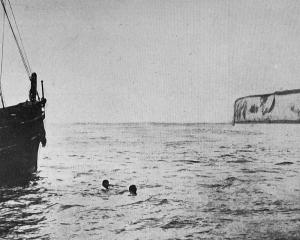
Although the legend "Inquire Within upon Everything" does not head this column, it very well might.
Not because of extravagant professions by me put forth, but thanks to the generous confidence of my friends — or some of them.
Here is one who asks a question the answer to which he might have got from the almanac— "What is the first day of spring?" —and signs himself "Bewildered."
There is better excuse for this than at first appears.
By light of nature we should assume that summer lay half and half on each side of the longest day, and winter half and half on each side of the shortest day; by which rule spring would begin six and a-half weeks after the shortest day, autumn six and a-half weeks after the longest.
Got that?— or do you say that we are all bewildered together?
Think it out, and acknowledge how equitable, rational, and symmetrical an arrangement it is. But the astronomers and the almanac makers for reasons of their own make summer to begin on the longest day — in the northern hemisphere June 21, — winter on the shortest — December 22; so that there is no winter (in this hemisphere, no summer) till three days before Christmas, which seems absurd. But on this basis are spring and autumn arranged. Turning up Whitaker you will see against March 21, "Spring commences" — here autumn; against September 24, "Autumn commences" — here spring.
Unless you would like me to go into celestial mathematics and the precession of the equinoxes, this is the last word in the matter. — Civis.
• Mr G. F. Morgan, of Bondi, caught a shark last week on Bondi Beach with a rod and reel and 24-cord line of the type usually used for tarpon fishing (says the Sydney Sun).
It took him an hour and a-quarter to land the 11ft 3in monster, which weighed between eight and nine cwt, and was of the true tiger species.
But it probably took the shark much longer to digest the last meal that he had before being caught, for a quaint collection of prey was found inside him.
First, and most inedible, was a 20lb porcupine fish, absolutely covered with hard spines, and looking like a weapon of torture used by the Huns.
Inside him, also, was a large porpoise, a most unusual meal in a shark’s menu, a little shark, an albatross with a wing-span of between 6ft and 7ft, a lot of mixed small fish, and a King Charles spaniel dog with a collar on, but no name.
• Mr and Mrs Peter Graham left on their return to Mount Cook on Wednesday.
The chief guide will resume the work of erecting a hut on the old Fitzgerald bivouac on the Sefton Footstool.
The material is already on the ground (6000ft up), and building will be proceeded with as the snow permits.
The hut is to be 8ft x 10ft, but otherwise will be constructed like the larger huts that have proved so successful, of iron, lined with linoleum, and equipped with oil stoves, etc.
It will prove of great value in ascents of the Footstool (9027ft) and Mount Sefton 10,350ft). The guides will also occupy the winter in track-making.
• An exceptionally high tide, accompanied by a very heavy sea, was experienced at Sumner on Monday afternoon, and the huge breakers presented a remarkably fine sight.
The sea found its way up several of the side streets, and the stone wall near the pier received the full force of the breakers.
The breakwater which forms the boat harbour at the Scarborough end of the beach received the full force of the sea, and considerable damage was done to the outer face, while several of the fishing boats on the slip struck trouble. — ODT, 26.8.1916.
• COPIES OF PICTURE AVAILABLE FROM ODT FRONT OFFICE, LOWER STUART ST, OR WWW.OTAGOIMAGES.CO.NZ











